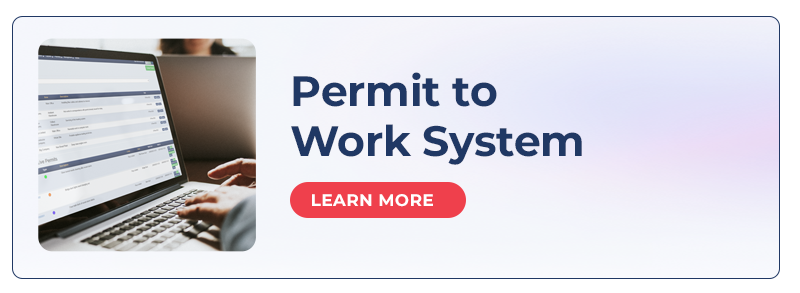Smarter, Safer, More Connected Operations
In today’s fast-paced industrial environments—offshore, onshore, and everywhere in between—safe, well-coordinated work is non-negotiable. The Permit to Work (PTW) process ensures that every task is properly planned, authorised, and executed with the right controls in place.
But while traditional paper-based systems have long been the standard, modern operations demand something more agile. A digital permit to work system offers visibility, efficiency, and consistency that simply aren’t achievable with manual methods.
At Pisys, we’ve helped organisations across energy, utilities, and manufacturing transform the way they manage work control—replacing paper and spreadsheets with intelligent, centralised, digital systems that bring safety and productivity together.
Why Permit to Work Systems Matter
A PTW system ensures that all work performed on site is:
Planned and approved,
Carried out safely, and
Communicated clearly to everyone affected.
Before any permit is issued, several key questions must be addressed:
Where Will the Work Be Done?
Understanding the exact location and nearby hazards is essential. A tank containing flammable liquid, a pedestrian walkway, or another live permit in the same area may all create risks.
A digital PTW system provides a live visualisation of all permits in force—often through an interactive permit board—making it easy to spot and manage SIMOPS (simultaneous operations) before they cause conflicts.
Who Will Do the Work?
Only qualified, authorised personnel should perform high-risk tasks. A digital system simplifies this verification by linking permits directly to worker competencies and contractor credentials, ensuring that only the right people are approved.
Are Any Isolations Required?
Lock-Out-Tag-Out (LOTO) procedures are critical for preventing accidents during maintenance and repair. A digital PTW platform can automate isolation management, track approvals, and log every step—reducing errors and delays.
Who Needs to Be Informed When Work Is Completed?
Good communication doesn’t end when the job does. Digital PTW systems automatically notify relevant stakeholders when permits are closed, ensuring everyone—from supervisors to operators—is informed and aligned.
How Will Others Know That the Work Is Being Done?
Overlapping activities can create hidden risks. A digital system gives real-time visibility of active work, alerting teams to any conflicting operations nearby and helping to prevent scheduling issues before they escalate.
Will Specialist Work Be Involved?
Tasks like hot work, confined space entry, or work at height require additional permits and safeguards. Digital platforms handle these seamlessly, linking related permits together to ensure all specialist controls are applied.
The Advantages of a Digital PTW System
Moving from paper to digital isn’t just a matter of convenience—it’s a strategic step toward smarter safety management.
1. Centralised Management and Visualisation
A digital PTW system provides a single source of truth for all permits, isolations, and work activities. With visual “plot plans” and interactive boards, managers can instantly see what’s happening across the entire site.
2. Customisation and Flexibility
Every site is different. Digital systems like Pisys PTW Software let you create, modify, and customise templates to suit specific operational requirements—whether for construction, offshore wind, or refinery maintenance.
3. Integration with Risk Assessments
Each permit can be linked directly to supporting documents such as RAMS (Risk Assessment Method Statements), so all stakeholders have access to the latest safety information in one place. This reduces miscommunication and ensures consistency across teams.
4. Efficient Permit Storage and Retrieval
Paper permits are easily lost or damaged. In contrast, digital records are securely stored, fully searchable, and instantly accessible from any device. Audits, incident reviews, or historical checks become quick and stress-free.
5. Speedy Authorisations and Handbacks
Digital workflows dramatically reduce turnaround times for approvals. With instant notifications and online sign-offs, teams spend less time waiting and more time working safely. Handbacks are equally simple, with automatic record updates and closure logs.
6. Enhanced Oversight and Analytics
With all permits stored centrally, managers gain a complete overview of site activity. Built-in analytics tools—such as Power BI dashboards—deliver insights into trends, bottlenecks, and safety performance, supporting continuous improvement.
Why Choose Pisys?
Pisys’ Digital Permit to Work System was designed in collaboration with industry leaders to meet the complex demands of modern operations. Our platform offers:
Real-time permit visibility across multiple sites
Seamless integration with isolations, risk assessments, and contractor management
Fully auditable digital records
Configurable templates for different permit types
Scalable, cloud-based or hybrid deployment options
Whether you’re managing offshore platforms, manufacturing plants, or multi-site industrial projects, Pisys helps you achieve safer, faster, and more transparent work control.
The Future of Safe Work Management
The shift to digital safety systems is no longer optional—it’s essential. As workforces become more distributed and operations more complex, organisations need reliable tools that connect people, processes, and data in real time.
A digital permit to work system provides that foundation: eliminating delays, reducing risk, and giving management the oversight needed to make confident, informed decisions.
At Pisys, we’re helping companies across the globe make that transition—simplifying safety, boosting productivity, and ensuring every job gets done right, every time.
